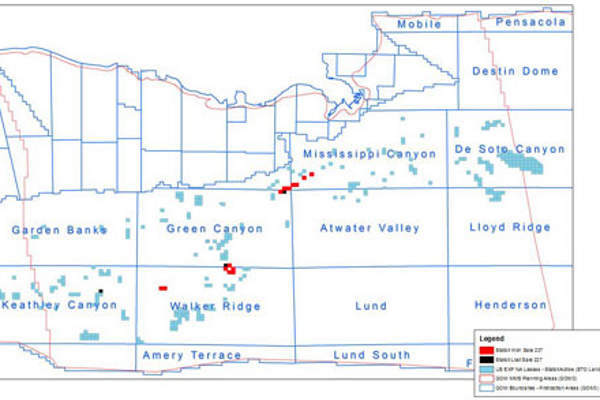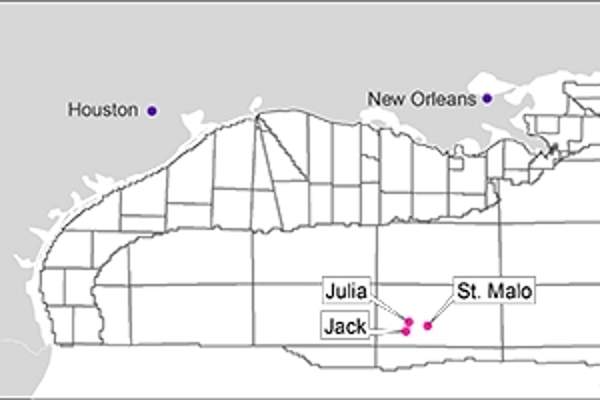Julia oil field is located in the Gulf of Mexico, 200 miles south of New Orleans, Louisiana, US. The offshore field is owned 50% by Statoil and 50% by the operator, Exxon Mobil.
The first phase of the field’s development was sanctioned in May 2013 with a capital investment of $4bn. The oil field was brought on stream in April 2016, with an initial production capacity of 34,000 barrels of oil a day.
Julia oil field discovery and reserves
The oil field consists of five leases, namely WR-584, WR-627, WR-628, WR-540 and WR-583, in the Walker Ridge area in water depths of more than 7,000ft (2,100m).
The oil field was discovered by the Statoil-Exxon Mobil joint venture (JV) in 2007. It was one of the largest discoveries in the Gulf of Mexico at that time.
The discovery well was drilled up to a depth of 9,500m. The subsequent appraisal drillings in the field suggested six billion barrels of oil resources recoverable at depths up to 30,000ft beneath the seabed.
The Julia field is estimated to have a life up to 40 years.
Dispute over the Gulf of Mexico-based field
The Statoil-Exxon Mobil joint venture was formed in 2005 to explore the oil resources in the ultra-deep waters in the Gulf of Mexico.
The two partners sought suspension of production (SOP) in October 2008 in order to extend the lease, which was otherwise expiring in November of the same year. The application for lease extension was, however, denied on the ground that there had not been any specific development plan for the oil field.
In August 2011, the partners appealed in the federal court to challenge the lease cancellation order. The lawsuit was settled in December 2011, with the federal officials and Julia field partners entering into a settlement agreement, under which the latter would retain the lease but pay a higher annual rental of around $11.2m for the acreage, until the field’s production reaches 87.5 million barrels. The partners also promised to commence production from the field by 2016 as part of the agreement.
The settlement was approved by the US District Court on 18 January 2012, which ultimately led to the dismissal of the ongoing case.
Meanwhile, the Julia partners had negotiated with the partners of the nearby Jack and St Malo fields for an amended production handling agreement (PHA) pertaining to Julia field’s output. The amended PHA was signed between both parties in January 2012.
Development of the offshore oil field
The offshore oil field is being developed in several phases. The $4bn first phase development of the field involves six wells tied back to the floating production platform of the Jack & St. Malo fields, located 15 miles away from the Julia field.
Sanctioned in 2010, the Jack & St. Malo field development commenced production in December 2014. Chevron is the operator of the Jack & St. Malo field and the co-owner, Statoil, has a 21.5% working interest in the field development.
The drilling for phase one development of the Julia oil field began in 2014. The estimated cost for each of the six wells to be drilled is approximately $230m. Phase one is expected to take three years for its completion.
Contractors involved with the Julia offshore project
FMC Technologies is the supplier of subsea equipment for the project, including six subsea trees, manifold and associated tie-in equipment.
ENGlobal’s Subsea Controls and Integration Division is the provider of the Universal Master Control Station.
Technip secured a subsea contract to provide project management services, engineering, fabrication, installation and pre-commissioning for the Julia project.
Nexans secured a major contract with OneSubsea in July 2013 to design, manufacture and supply an umbilical solution for the Julia oil field development.





